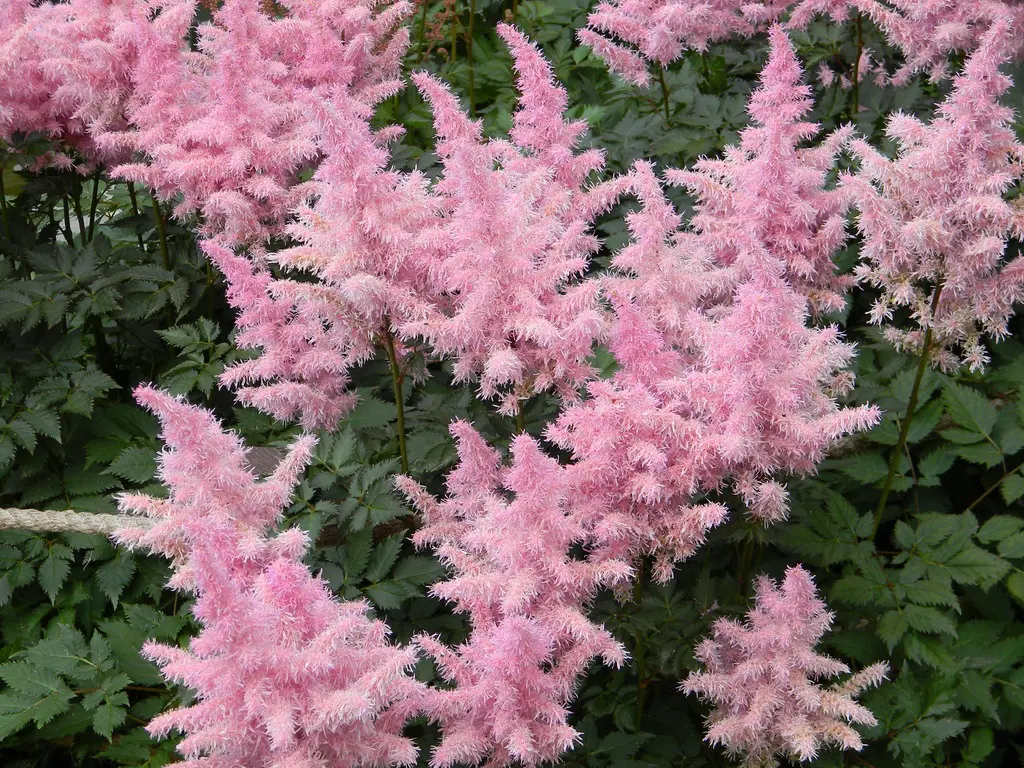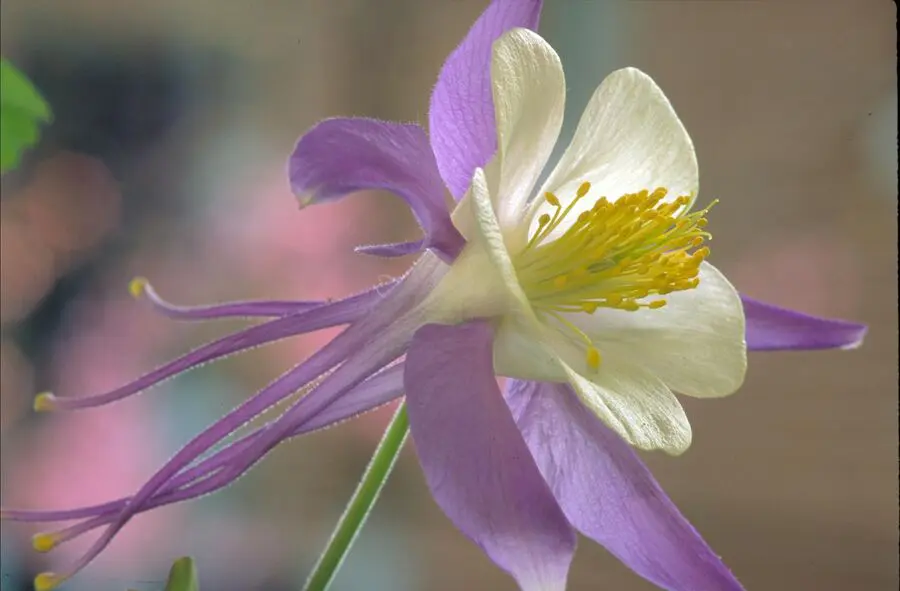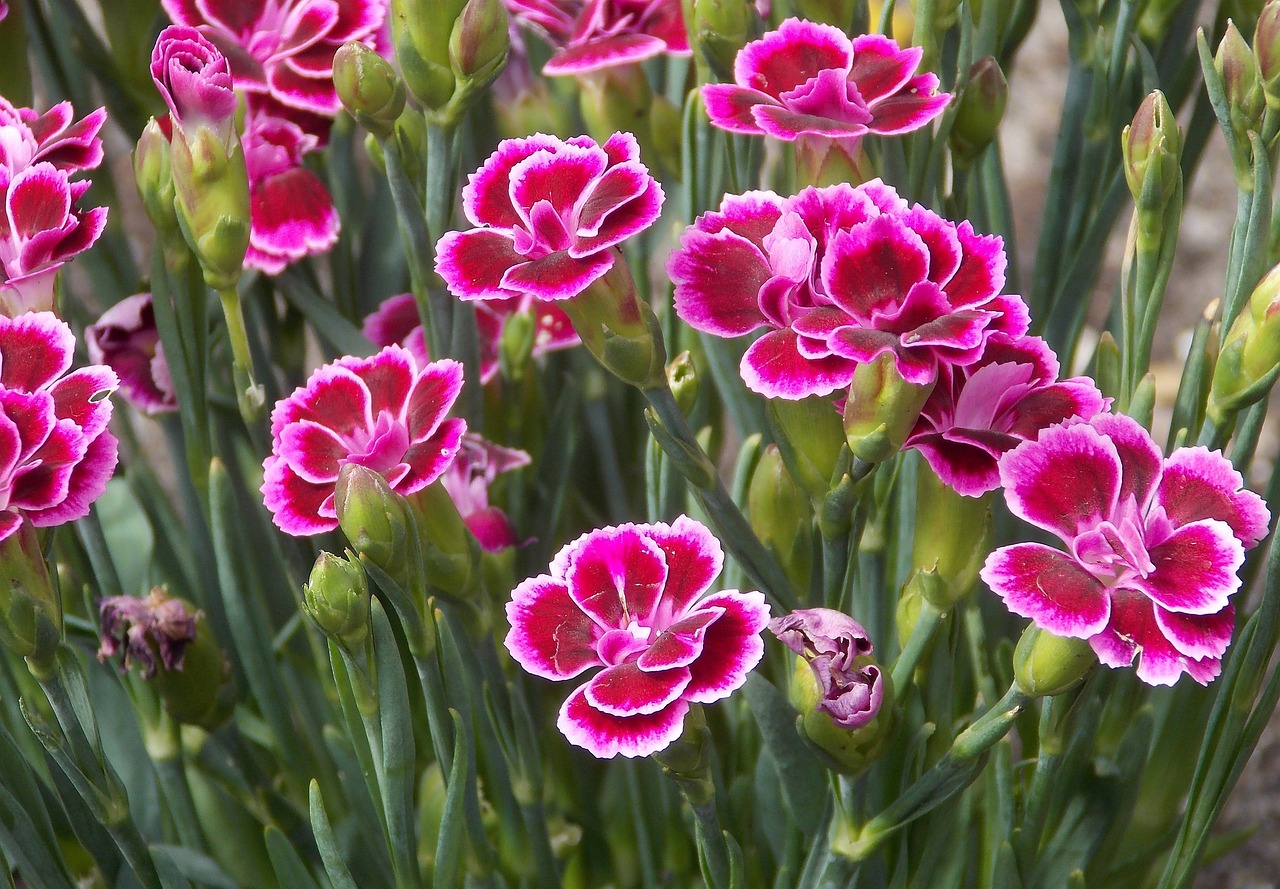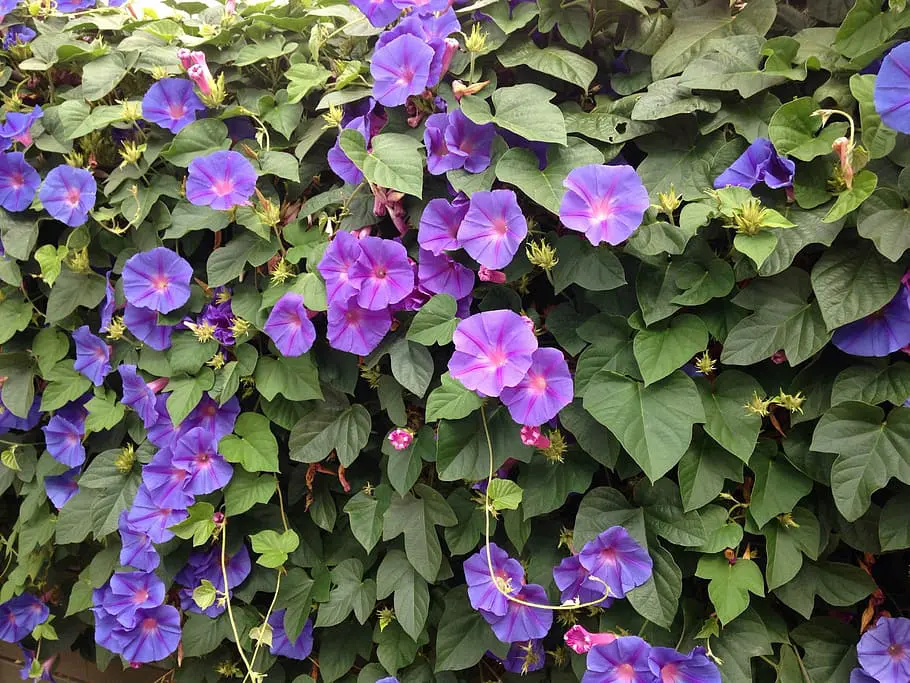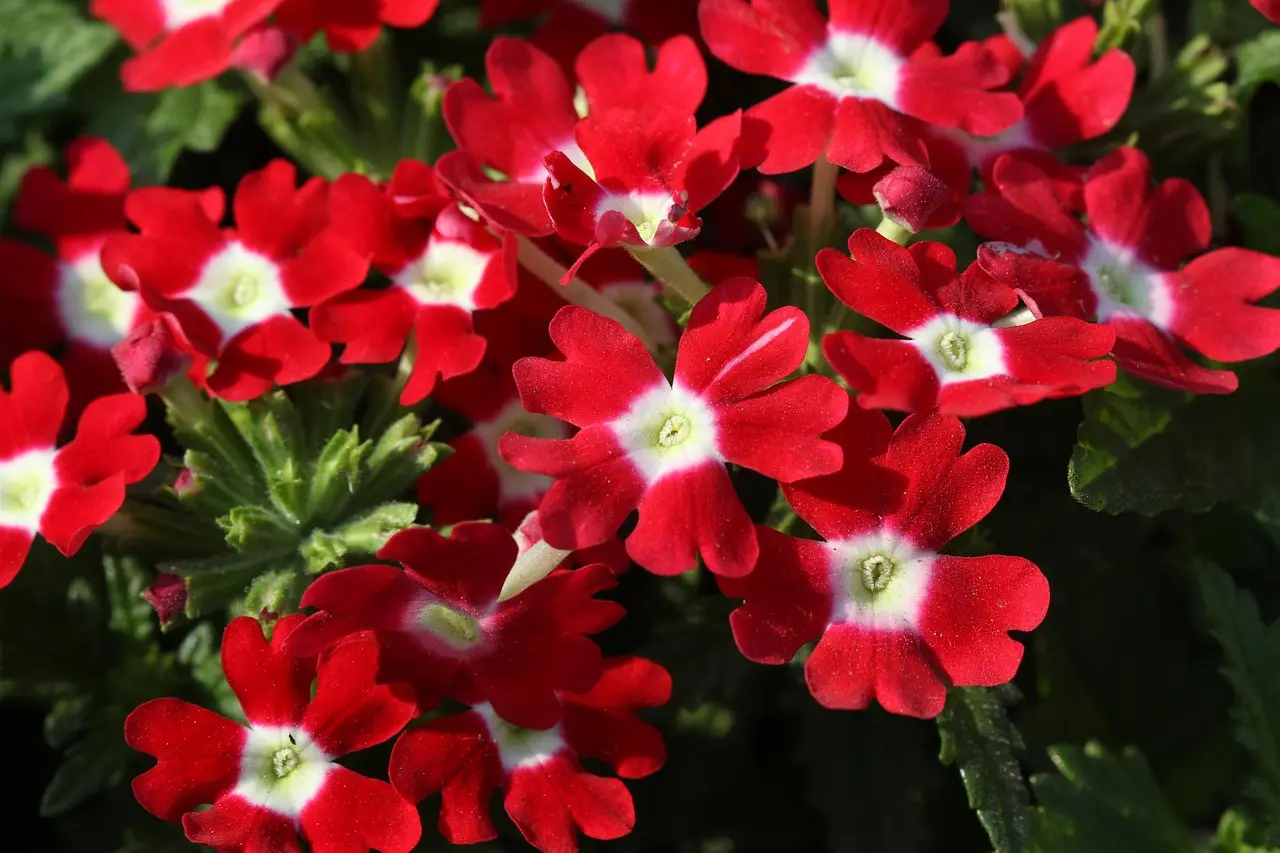This post contains affiliate links. If you buy something from one of our links we may earn a commission. Thanks
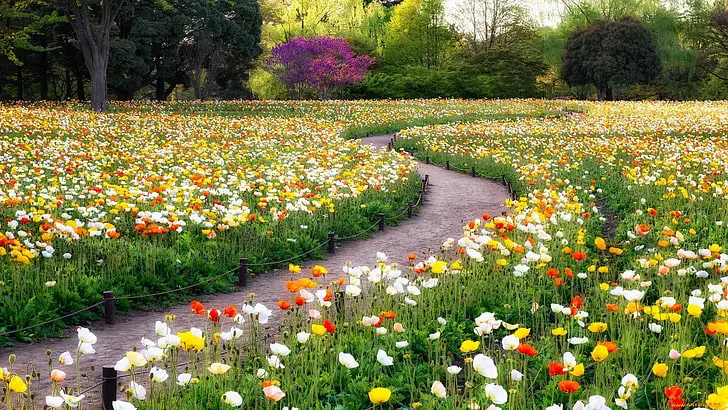
Discover the joy of growing Poppies in pots! Our guide walks you through every step, from seed to blossom, making home gardening a breeze. Join us!
You can grow Poppies in pots by using well-draining soil and scattering the seeds on the surface. Provide indirect sunlight and keep the soil moist but not waterlogged. Thin out the seedlings to avoid overcrowding and maintain indoor temperatures between 55-65°F for optimal growth.
Ever thought of adding a pop of color to your balcony, patio, or windowsill with vibrant, blooming Poppies? Well, growing Poppies in pots might be just the project for you. It’s a fun, rewarding way to immerse yourself in gardening without needing a huge backyard. Whether you’re an experienced green thumb or a newbie in the world of gardening, we’re here to guide you on this colorful journey. Let’s turn those pots into mini-gardens of stunning Poppies together
Introduction to Growing Poppies in Pots
Welcome to our comprehensive guide to growing Poppies in pots.
Poppies, with their burst of colors and ethereal beauty, can transform your space into a visual delight, and the best part is they can thrive wonderfully in pots!
In this guide, we’ll explore the different types of Poppy flowers you can grow, the ideal pots, soil, and care they require, and how to handle common pests.
We’ll also delve into the exciting process of planting and germination, plus tips on harvesting and storing.
And if you’ve got questions, we’ve got a handy FAQ section waiting for you.
Ready to embark on this horticultural adventure? Let’s get started!
What are Poppies?
Poppies, in a nutshell, are a group of flowering plants belonging to the Papaveraceae family.
These diverse plants are known for their striking flowers, often characterized by delicate, papery petals and a central, round cluster of stamens.
From the robust Oriental Poppy to the vibrant California Poppy, these bloomers come in a stunning array of colors and varieties.
Some types, like the famous opium Poppy (Papaver somniferum), have been used for culinary and medicinal purposes for centuries.
So whether you’re drawn to their visual appeal or their rich history, there’s no doubt that Poppies are a captivating addition to any garden.
Why Grow Poppies in Pots?
You might be asking, Why should I grow Poppies in pots? Well, let’s dive into a few compelling reasons.
Firstly, pot gardening is perfect for those who don’t have a lot of outdoor space.
Even if your home lacks a sprawling backyard, you can still enjoy the charm of these blooms right on your balcony or windowsill.
Secondly, growing Poppy plants in pots allow for easier control over soil and watering conditions, which can lead to healthier, happier plants.
Finally, it’s an incredibly rewarding experience! There’s nothing quite like the satisfaction of nurturing these beauties from seeds to stunning blossoms.
Plus, their vibrant colors can truly uplift your mood and brighten up your living space. So why not give it a try?
Types of Poppies You Can Grow in Pots
Now that you’re all set on why you should try your hand at growing Poppies in pots, let’s delve into the wonderful world of Poppy varieties.
Poppies come in an array of shapes, sizes, and colors, and while they all share a unique charm, each type has its own specific characteristics and needs.
From the vibrant Oriental Poppies to the sunshine-like California Poppies, we’re going to introduce you to some of the most pot-friendly types you can consider for your home garden.
Ready to find the perfect Poppy for your pot? Let’s dive in!
Oriental Poppies
Oriental Poppies, or Papaver orientale, is a true sight to behold. Known for their large, eye-catching blooms, these Poppies feature bold colors, often in shades of red, pink, white, or orange.
Their striking black centers contrast beautifully with their silky petals, making them a standout addition to any pot garden.
Oriental Poppies are perennial Poppies, meaning they’ll delight you with their blooms year after year.
Just remember, they love full sun, so make sure they get plenty of light!
California Poppies
Say hello to Eschscholzia californica, more commonly known as the California Poppy.
These beauties are a little different from their Poppy cousins.
Sporting a cup-shaped appearance and a vibrant golden hue (though they do come in other colors!), these Poppies are native to the western United States and are even the state flower of California.
They’re drought-tolerant and prefer well-drained soil. In a pot, they can add a sunny splash of color that’s simply irresistible.
Iceland Poppies
Iceland Poppies, or Papaver nudicaule, is another fantastic choice for your pot garden.
The Iceland Poppy are beloved for their pastel-colored, lightly fragrant flowers, which can bring a subtle, dreamy aesthetic to your space.
Despite their name, they aren’t just for cold climates and they can adapt to a variety of environments.
Provide them with full sun, well-drained soil, and watch as they sway gently in the breeze, adding movement to your garden.
Corn Poppies
Corn Poppies, also known as Flanders or Field Poppies (Papaver rhoeas), are an iconic symbol of remembrance and have a rich history.
These annual Poppies feature bright red petals and black markings, creating a vivid display that’s hard to miss.
They’re hardy, adaptable, and easy to grow, making them an excellent choice for beginners.
Whether you’re observing Remembrance Day or simply want to enjoy their radiant blooms, Corn Poppies are a worthy addition to your pot garden.
Choosing the Right Pot for Your Poppies
Alright, you’ve chosen your Poppy type and you’re excited to get started. But wait, what about the pots?
Choosing the right pot for your Poppies is just as important as selecting the Poppy type.
It’s not just about aesthetics, the right pot can make a world of difference to your plant’s health and growth.
It’s all about size, material, and of course, drainage! In this section, we’ll guide you through each of these factors to ensure your Poppies have the perfect home.
So, let’s turn you into a pot-picking pro!
What size container for Poppies
When it comes to picking a pot size for your Poppies, remember that space is crucial.
Poppies aren’t fans of being crowded, and they appreciate a good amount of room to grow.
A medium to large-sized pot, about 10 to 12 inches in diameter, should suffice for most Poppy varieties.
If you’re planting multiple Poppies in one pot, make sure they have plenty of space between them.
Not only does this prevent competition for resources, but it also allows for better air circulation, which helps keep your plants healthy.
Pot Size and Material
Now, let’s talk about the material of the pot. You can find pots made from various materials like plastic, terracotta, ceramic, and more.
Plastic pots are lightweight and affordable but can retain more heat, which might not be ideal in hotter climates.
Terracotta pots are a classic choice. They’re breathable, which helps prevent overwatering, but they can dry out quickly, so you may need to water more often.
Ceramic pots can be quite decorative, but they are heavy and not as porous as terracotta. So, your choice of pot material can depend on your climate, budget, and aesthetic preference.
Drainage Considerations
Finally, we can’t stress enough the importance of good drainage.
Poppies don’t enjoy soggy feet and overwatering or poor drainage can lead to root rot and other unwanted problems.
Therefore, your chosen pot should have ample drainage holes at the bottom.
If you’ve fallen in love with a pot that lacks sufficient drainage, you can usually drill a few extra holes (carefully!).
You might also consider placing a layer of pebbles at the bottom of the pot to enhance drainage.
Remember, a well-drained pot is key to a happy, thriving Poppy!
Preparing the Soil for Poppies
It’s time to get our hands a bit dirty and talk about one of the most essential aspects of growing Poppies in pots, the soil.
While these colorful beauties are pretty hardy, they do have some specific soil needs to flourish.
And if you’ve chosen to use coco coir and perlite, two excellent ingredients for your potting mix, we’re off to a great start!
These components will ensure your soil is well-draining yet moisture-retentive, a balance Poppies appreciate.
So, ready to mix up the perfect home for your Poppy seeds? Let’s get to it!
Soil Type and pH Requirements
When it comes to soil, Poppies are relatively easy-going, but they do have their preferences.
Your choice of coco coir and perlite is spot-on. Coco coir, derived from the husk of coconuts, is a fantastic soil amendment.
It’s well-draining, yet it retains moisture and allows for great air circulation, providing the roots of your Poppies with a well-aerated environment to thrive.
Meanwhile, perlite, those little white specks you often see in potting mix, will further enhance drainage and prevent soil compaction.
Poppies prefer a slightly acidic to neutral pH, somewhere between 6.0 and 7.5. Coco coir generally sits in this range, so it’s a suitable choice.
However, you may still want to test your soil’s pH and adjust it if necessary using soil amendments.
Fertilizer Needs
While Poppies aren’t particularly heavy feeders, they do appreciate a bit of nutritional boost, especially when they’re flowering.
A balanced, slow-release fertilizer can work wonders. This type of fertilizer gradually releases nutrients into the soil, providing a steady supply over an extended period.
You can mix the fertilizer into your potting mix before planting, ensuring your Poppies get off to a good start.
But remember, less is often more when it comes to fertilizing.
Over-fertilization can lead to a lot of lush green growth at the expense of blooms, or worse, damage your plants.
So follow the instructions on your fertilizer package, and your Poppies will thank you!
Coco Coir Perlite Mix
If you’re wondering how to create the perfect potting mix for your Poppies using coco coir and perlite, you’re in the right place!
This mix is excellent for promoting healthy root growth and ensuring proper drainage.
Coco coir is a fibrous material that comes from the outer husk of coconuts.
It has excellent water retention abilities, it’s environmentally friendly, and most importantly for your Poppies, it offers excellent aeration and drainage.
Perlite is a type of volcanic glass that’s been heated until it expands. It is lightweight and porous, which makes it fantastic for improving aeration and drainage in your potting mix.
A common ratio for a coco coir and perlite mix is about 70% coco coir and 30% perlite. This will give you a well-draining yet moisture-retentive mix that Poppies will love.
Just combine the two in a large bucket or on a tarp, mix thoroughly, and voila, you’ve got yourself a top-quality, DIY potting mix that your Poppies will thrive in!
Planting and Germination of Poppies
You’ve got your pots picked out, and soil prepared, and you’re now one step closer to your dream of growing Poppies in pots.
The next adventure? Planting and germination. This is when you’ll finally see those little seeds start their journey, transforming from tiny specks into beautiful, blooming Poppies.
It’s a process that requires some patience and care, but oh, the reward is worth it!
So let’s guide you through the ins and outs of planting and germinating your Poppy seeds. It’s time to get those green thumbs ready!
Growing Poppies from Seed
Starting Poppies from seed is a fantastic and economical way to fill your pots with these gorgeous flowers.
Poppies are usually directly sown because they don’t like root disturbance.
Before planting, ensure your pots are filled with your well-prepared coco coir and perlite mix.
Then, scatter your seeds on the surface of the soil. Cover them lightly with a dusting of soil or compost, as Poppy seeds need some light to germinate.
Keep the soil moist but not waterlogged, and you should see seedlings popping up in a couple of weeks!
Paper Towel Method
Another way to start Poppies from seed is the paper towel method.
This is especially useful if you want to check your seeds’ viability before planting them in the pot.
Simply moisten a paper towel, place your seeds on it, and fold it over. Keep the towel in a plastic bag, ensuring it stays moist but not soaking.
Store the bag in a warm location. You should see the seeds start to sprout in a few days to a week.
Once they sprout, you can carefully transfer them to your pots.
When to Plant
Timing is everything when planting Poppies. While Poppies can handle a light frost, they prefer cooler growing conditions and can struggle in the heat of the summer months.
So, an ideal time to plant is in early spring when the soil has warmed a bit but temperatures are still moderate.
Alternatively, you could plant in the fall for spring blooms.
Keep in mind that the exact timing can depend on your local climate and the specific variety of Poppy you’re planting.
How to Plant
Planting Poppies isn’t a difficult task. After preparing your pot and soil, scatter the Poppy seeds on the soil’s surface.
Lightly cover the seeds with soil, but don’t bury them deeply as they need some light to germinate.
Water the area gently using a watering can or a spray bottle set to mist. This prevents the seeds from being dislodged.
Place the pot in a location that gets full sun, as Poppies love the sunshine.
Keep the soil consistently moist until the seeds germinate and you see the young seedlings.
From there, you can watch your Poppies grow and anticipate their beautiful blooms!
Poppy Care and Maintenance
Now that your Poppies have taken root and started their journey to becoming beautiful, full blooms, it’s time to shift our focus to the ongoing care and maintenance these vibrant flowers need.
Just like any plant, Poppies require a little TLC to look and perform their best.
But don’t worry, caring for Poppies isn’t a daunting task. In fact, with a few simple steps and a keen eye, you’ll have your Poppies blooming and filling your space with a burst of color in no time.
So, are you ready to become a Poppy-care pro? Let’s dive in!
Watering Needs
When it comes to watering, the key is balance. Poppies prefer well-drained soil and don’t do well with waterlogged roots.
Water your Poppies thoroughly, but allow the top layer of soil to dry out between waterings.
Remember that coco coir does a great job of retaining moisture, so overwatering is unlikely, but it’s still important to keep an eye out for any signs of water stress.
Light and Temperature Requirements
Poppies adore the sun. They strive for a sunny spot where they can bask in at least 6 hours of sunlight each day.
While they can tolerate a little bit of shade, insufficient light can lead to leggy growth and fewer flowers.
Temperature-wise, Poppies enjoy cooler conditions, especially during the growing season.
They can handle a bit of frost, but prolonged freezing conditions can harm them.
Do Poppies Need Full Sun?
To reiterate, yes, Poppies love and need full sun!
Aim for a location where your potted Poppies can soak up at least six hours of sunlight daily.
Full sun exposure encourages healthy growth and plentiful blooms. If you’re growing them indoors, a sunny windowsill would be the perfect spot.
Pruning and Repotting
With Poppies, pruning mainly involves deadheading, which is the removal of faded or dead flowers.
This encourages the plant to produce more blooms. However, if you want your Poppies to self-seed, leave some of the seed heads in place.
As for repotting, Poppies prefer to not be disturbed. They can live happily in the same pot for a couple of years.
If you do need to repot, do so in the dormant season and handle the root ball with care to minimize root disturbance.
How Tall Do Poppies Grow?
The height of Poppies can vary widely depending on the species. Some, like the California Poppy, stay quite low to the ground and only grow about a foot tall.
Others, like the Oriental Poppy, can reach up to 3 or 4 feet in height.
When you’re choosing a Poppy variety, consider the size of your pot and where you plan to display it to ensure the Poppies won’t outgrow the space.
Growing Poppies in pots indoors
Taking the beauty of Poppies indoors can be a fantastic idea, especially if outdoor space is limited or you simply want to brighten up your living area.
You might be thinking, can these sun-loving flowers really thrive indoors? Absolutely!
With the right conditions and care, growing Poppies in pots indoors is entirely possible, and the result can be utterly enchanting.
So, if you’re ready to bring a touch of nature’s artistry into your home, let’s dive into the world of indoor Poppy cultivation.
Can You Grow Poppies Inside?
Yes, you certainly can grow Poppies inside!
While it’s true that Poppies are generally outdoor plants, they can be successfully grown indoors with the right care and conditions.
The key is to mimic their natural outdoor environment as much as possible.
This means providing ample light, maintaining an appropriate temperature, and ensuring the soil has good drainage.
How to Grow Poppies Indoors
• Light: Poppies love the sun, so choose a location in your home that gets at least six hours of direct sunlight daily. A sunny windowsill or a room with a south-facing window can be an excellent spot.
• Temperature: Keep in mind that Poppies prefer cooler temperatures, especially during their growing season. Try to maintain a room temperature of around 60-65°F (15-18°C) if possible.
• Planting: Plant your Poppies in pots filled with a coco coir and perlite mix, just as you would if planting outside. Scatter the seeds on the surface and cover them lightly.
• Watering: Water your indoor Poppies carefully, ensuring that the soil stays moist but not waterlogged. Since indoor environments can often be drier, you might need to water more frequently.
• Care: Regularly check your Poppies for any signs of pests or disease. Also, remember to deadhead faded flowers unless you want the plants to self-seed.
By giving careful attention to these details, you can enjoy the vibrant beauty of Poppies right in the comfort of your own home.
Dealing with Common Pests and Diseases
Despite their delicate appearance, Poppies are relatively hardy. But just like any other plant, they can occasionally be visited by pests or affected by diseases.
Now, don’t let this discourage you. Most issues can be prevented or handled easily with prompt attention and the right knowledge.
After all, being aware of possible plant health issues is an integral part of gardening, indoors or outdoors.
So, let’s arm ourselves with the necessary information to keep our Poppies in tip-top shape!
Identifying Common Pests
Poppies can be a snack for a few common garden pests. Here’s what to watch for:
Aphids: These small, green or black insects love to cluster on the undersides of leaves or on young stems.
They suck the sap from your plants, which can stunt growth and distort leaves.
Aphid infestation can also lead to sooty mold due to the sticky honeydew they excrete.
Slugs and Snails: These are nocturnal pests that can chew large, irregular holes in the leaves and flowers of your Poppies.
You’ll often see their silvery trails on or around the plant in the morning.
Caterpillars: These can be harder to spot as they often blend in with the plant.
They chew holes in leaves and can defoliate a plant if the infestation is heavy.
Treatment and Prevention
Aphids: If you catch the problem early, you can often simply wash aphids off with a strong jet of water from a garden hose.
For heavier infestations, insecticidal soap or neem oil can be effective.
Always remember to test any treatment on a small part of the plant first to ensure it won’t cause damage.
Slugs and Snails: These can be handpicked off the plant at night or early in the morning.
Using barriers like crushed eggshells or diatomaceous earth around your pots can also deter these pests.
There are also organic slug and snail baits available on the market.
Caterpillars: Handpicking is the most eco-friendly method if the infestation is small.
For larger issues, a solution of water and mild dish soap sprayed on the plant can deter them. A spray of BT (bacillus thuringiensis) can also be effective.
In general, maintaining healthy plants through proper watering, lighting, and fertilization practices can prevent many pest problems.
Also, regularly inspect your plants for early signs of pests, so you can deal with them promptly before they become a serious issue.
Harvesting and Storing Poppies
Poppies are not just a delight for the eyes; they’re also a treasure trove for gardeners.
Depending on the variety you’re growing, you might be looking forward to a bounty of seeds, be it for culinary use or for sowing the following season.
So, once your Poppies have put on their fantastic show, it’s time to think about harvesting and storing.
Whether you’re after the seed pods or the seeds themselves, let’s get into the how-tos of reaping and preserving the rewards of your Poppy cultivation!
When and How to Harvest
Once your Poppies have bloomed and the petals have fallen, they will leave behind a seed pod.
It’s important to wait until the right moment to harvest. The seed pod will initially be green but will gradually dry out and turn brown.
When it has turned brown and the top of the pod starts to open, that’s your sign that it’s time to harvest.
To do so, cut the stem close to the base of the pod. Be gentle, as the seeds inside are loose and you don’t want them spilling out prematurely.
Storing Poppy Seeds
Once you’ve harvested your Poppy pods, you’ll want to extract and store the seeds.
To do this, let the pods dry out further in a cool, dry, and dark place for a week or so.
Once they’re dry, you can shake them gently, and the tiny seeds will fall out.
When storing Poppy seeds, an airtight container is your best bet.
They store well in a cool, dark place and can remain viable for several years.
If you have a lot of seeds, you might even consider freezing some for future use.
Poppies for Dried Floral Arrangements
Poppies make excellent additions to dried floral arrangements. For this purpose, you’ll want to cut the Poppy stems when the pods are still green.
Then, you can hang them upside down in a dry, dark place. It takes about two weeks for them to dry out completely.
Once dry, they can be used in arrangements as is, or you can get creative and paint the pods for a pop of color.
Their unique shape adds an interesting dimension to dried flower compositions, making your indoor decor even more special.
Frequently Asked Questions (FAQs)
You’ve been doing fantastic so far, getting to know your way around the fascinating world of growing Poppies in pots.
But we understand that you might still have some burning questions on the topic.
After all, gardening is a never-ending learning journey. So, we’ve gathered some of the most frequently asked questions about growing Poppies and will be answering them in this section.
We hope to clear any doubts and equip you with even more knowledge to help your Poppy-growing endeavor flourish!
Q: Can Poppies be grown indoors?
A: Absolutely! While Poppies thrive in full sun, they can also be grown indoors provided they receive adequate light, preferably near a south-facing window.
You’ll also want to ensure they’re planted in well-draining soil to prevent waterlogging and that they’re cared for just like outdoor Poppies.
Q: How often should I water my potted Poppies?
A: Poppies prefer well-drained soil and don’t like to sit in waterlogged conditions.
The rule of thumb is to water them thoroughly and then allow the top layer of soil to dry out before watering again.
In warmer weather, this might mean watering every few days. Always check the soil’s moisture level before watering to avoid overwatering.
Q: Why are my Poppies not flowering?
A: There could be several reasons why your Poppies aren’t blooming. They might not be receiving enough light, remember, they love full sun.
Alternatively, they could be in an area of high nitrogen soil, which promotes leaf growth over flower production.
Lastly, they could simply be too young; some varieties of Poppies don’t flower in their first year.
Q: How long do potted Poppies live?
A: This really depends on the type of Poppy. Some annual varieties such as the Corn Poppy or Flanders Poppy will live for just one growing season, while others perennial Oriental Poppies can live for several years, provided they are cared for properly.
Q: How long do Poppies take to grow from seed?
A: Poppy seeds typically germinate within 7-30 days, depending on the conditions.
However, they take around 60-90 days to flower after planting.
This can vary based on the type of Poppy and the growing conditions, so it’s always a good idea to check the seed packet for more specific guidance.
Growing Poppies in Pots Final Thoughts
Wow, what a journey it’s been exploring the fascinating process of growing Poppies in pots together!
From understanding what Poppies are, choosing the right type, planting, and nurturing them, all the way to harvesting, and addressing any issues that arise.
It might seem like a lot, but remember, every skilled gardener started where you are right now.
So, as we wrap up this guide, let’s take a moment to reflect on what we’ve learned and how you can use this knowledge to cultivate your own blooming Poppy garden, whether indoors or outdoors.
Recap For Growing Poppies in Pots
We’ve navigated through the wonderful world of Poppies together, touching on each crucial aspect of their growth journey.
We’ve learned about the different types of Poppies you can grow in pots—oriental, California, Iceland, and corn Poppies, and the specific care each type needs.
We’ve talked about selecting the right pot and the importance of well-draining soil.
The right planting techniques, regular care, and maintenance routines like watering, controlling temperature, light conditions, and pruning were also covered.
We discussed how to manage common pests and diseases, and the joys of harvesting and storing Poppy seeds.
And let’s not forget the valuable questions and answers that shed more light on popular Poppy-growing concerns!
Encouragement To Start Growing Poppies in Pots
Gardening is a rewarding journey of patience, learning, and continuous discovery, and you’re on the right path!
Growing Poppies in pots might be a new challenge, but remember, every plant you grow adds to your wealth of gardening knowledge.
So go ahead, get your hands dirty, plant those Poppy seeds, and watch them bloom in all their glory.
With every seed that sprouts, remember that you’re cultivating not just plants, but also patience, resilience, and a deeper connection with nature. Happy gardening!
Read more: Backyard Gardening Ideas
Growing Poppies Indoors
















